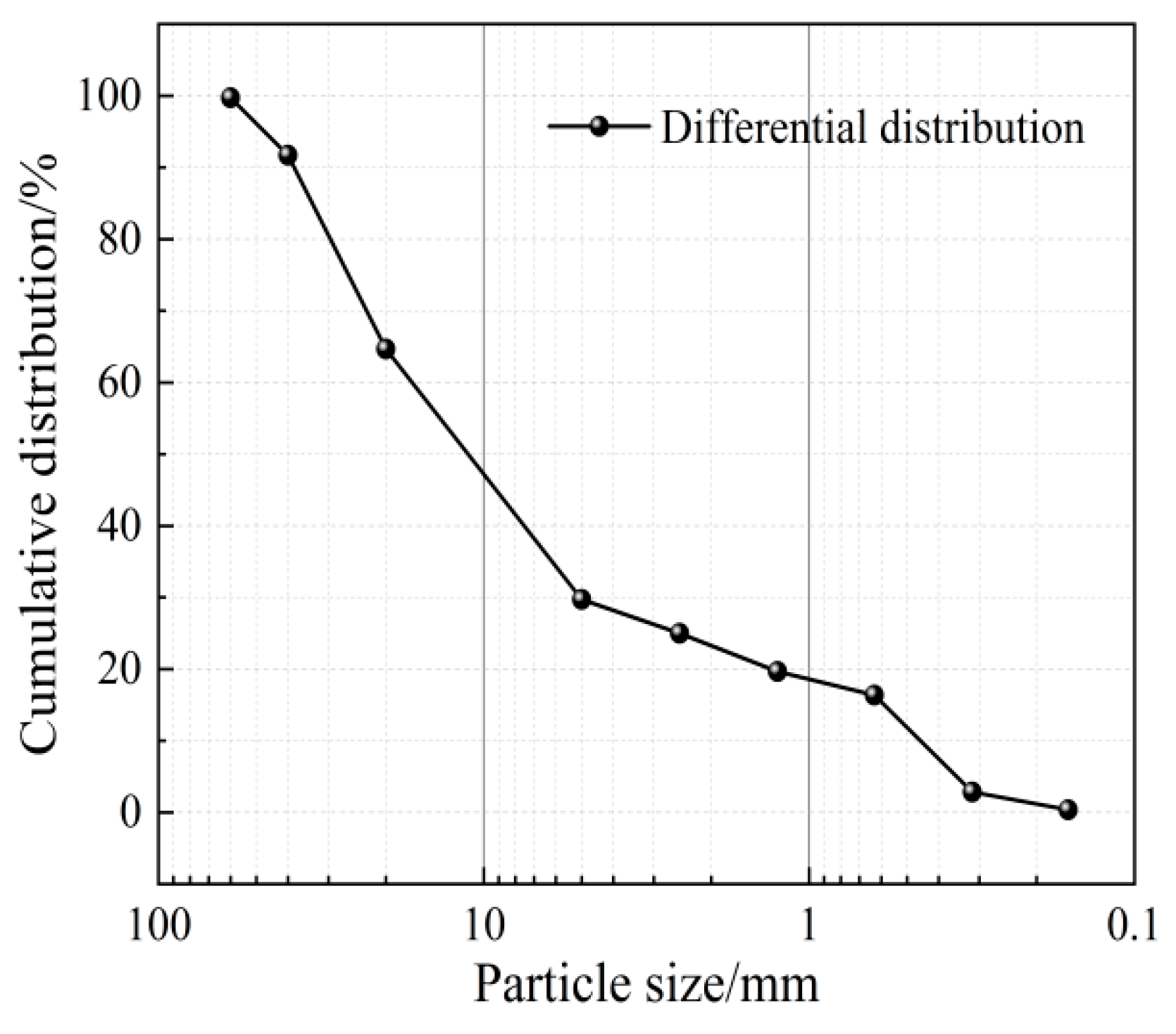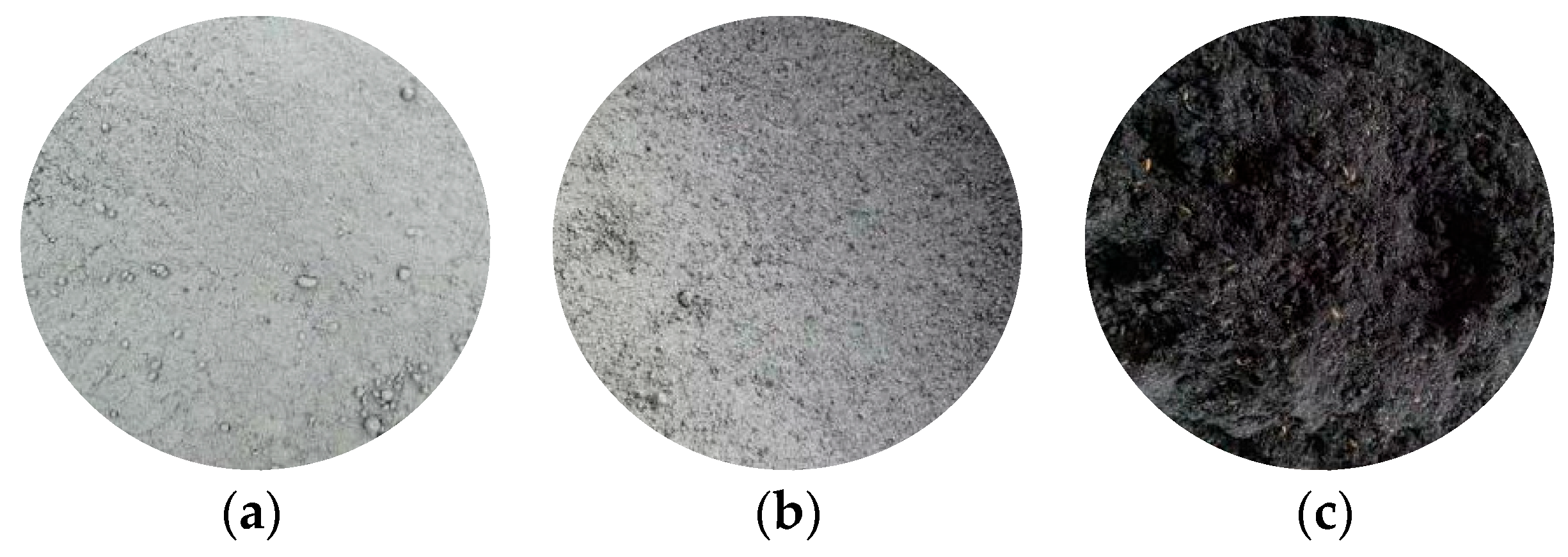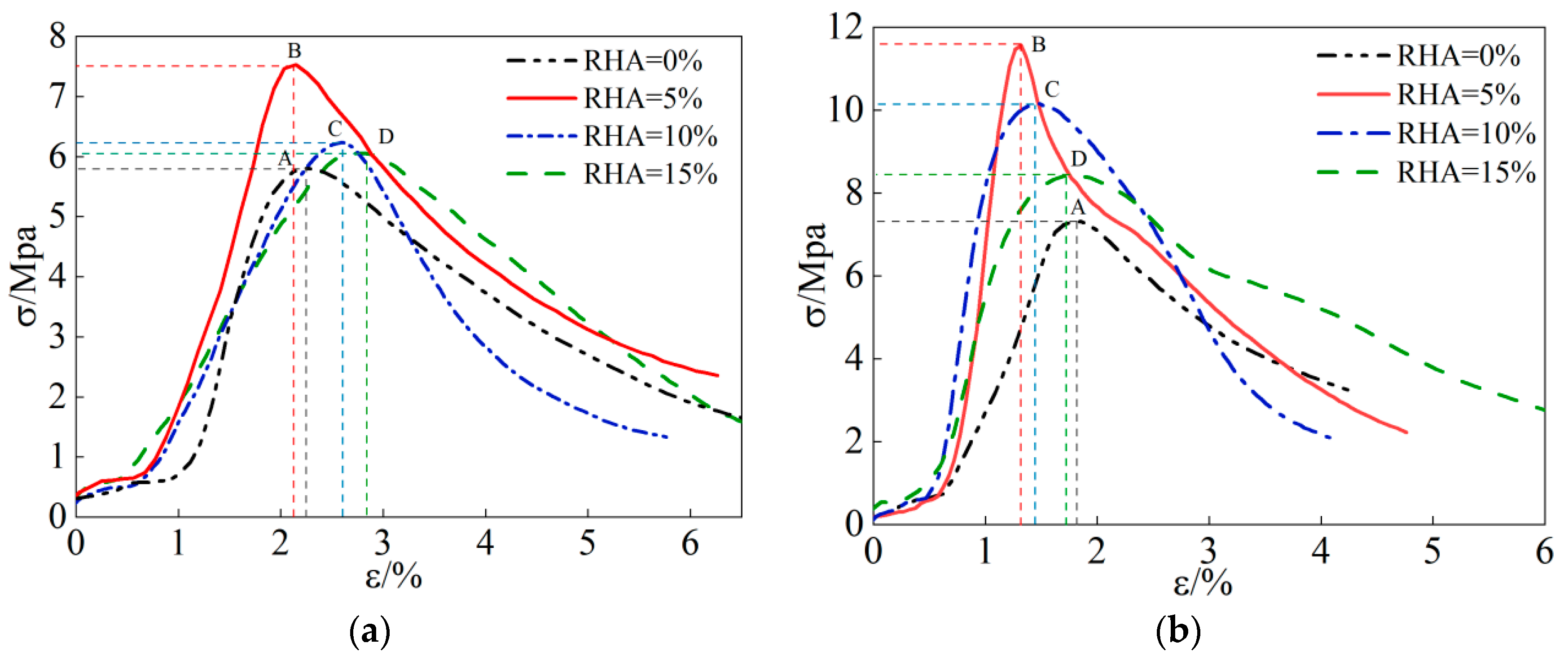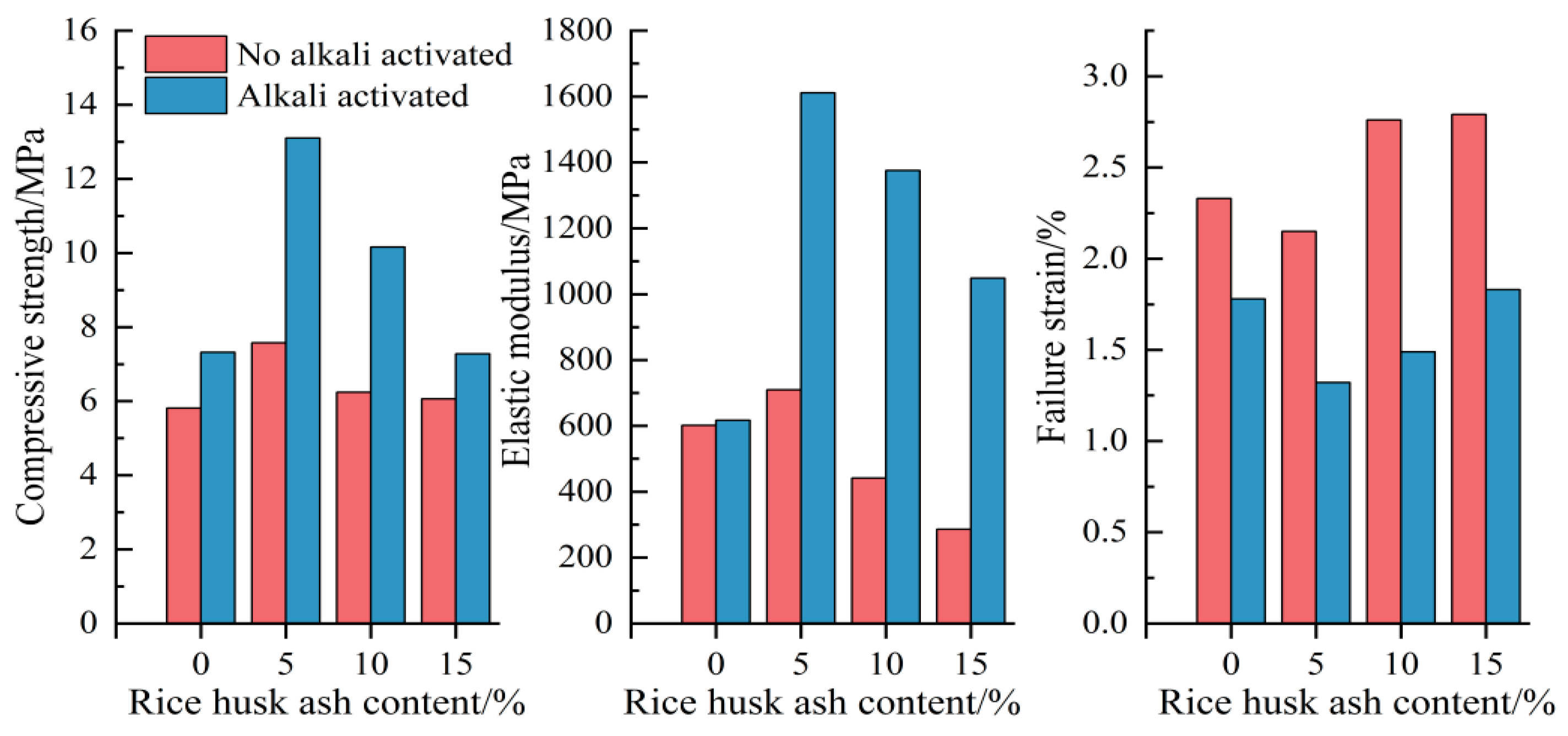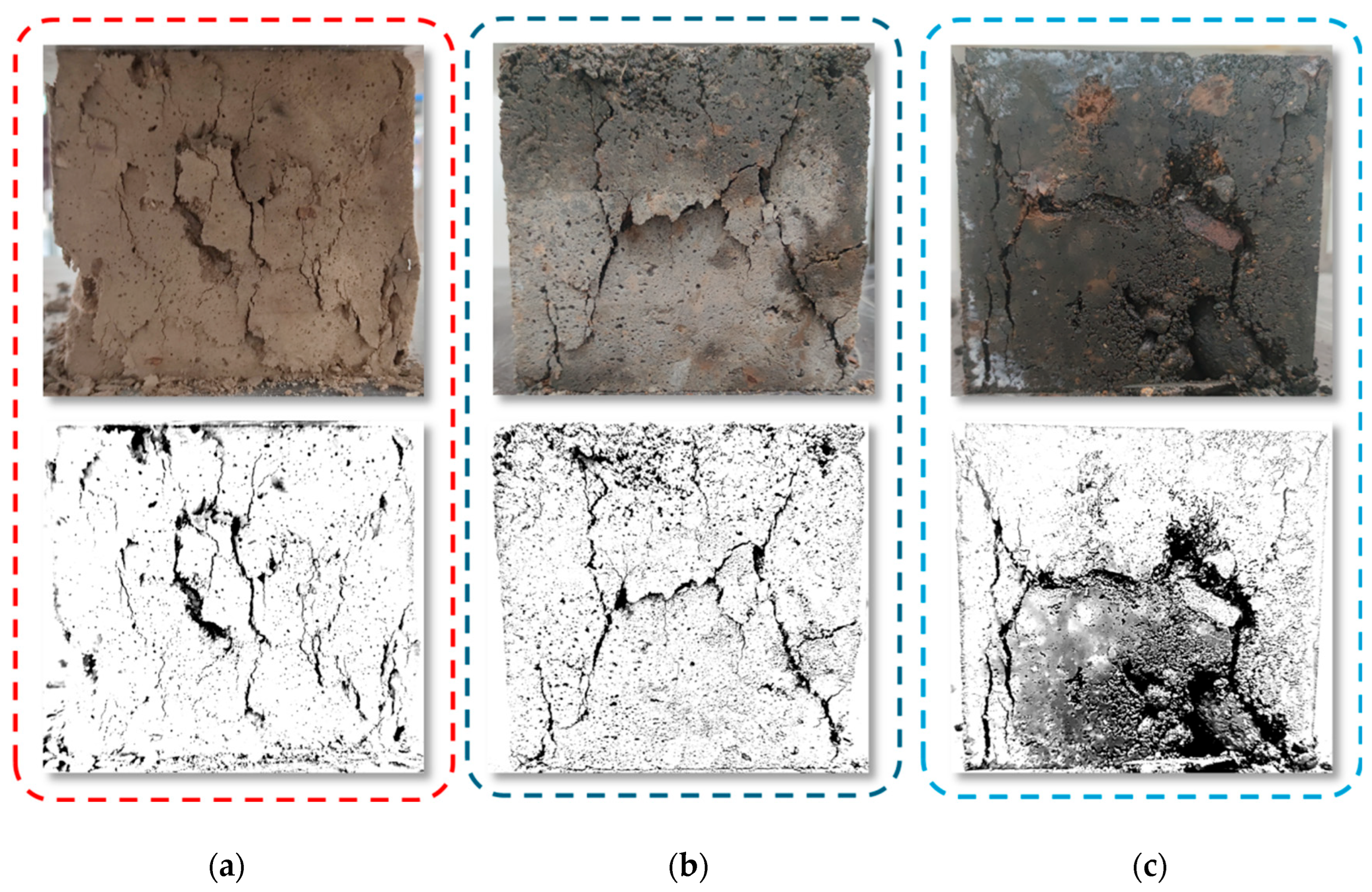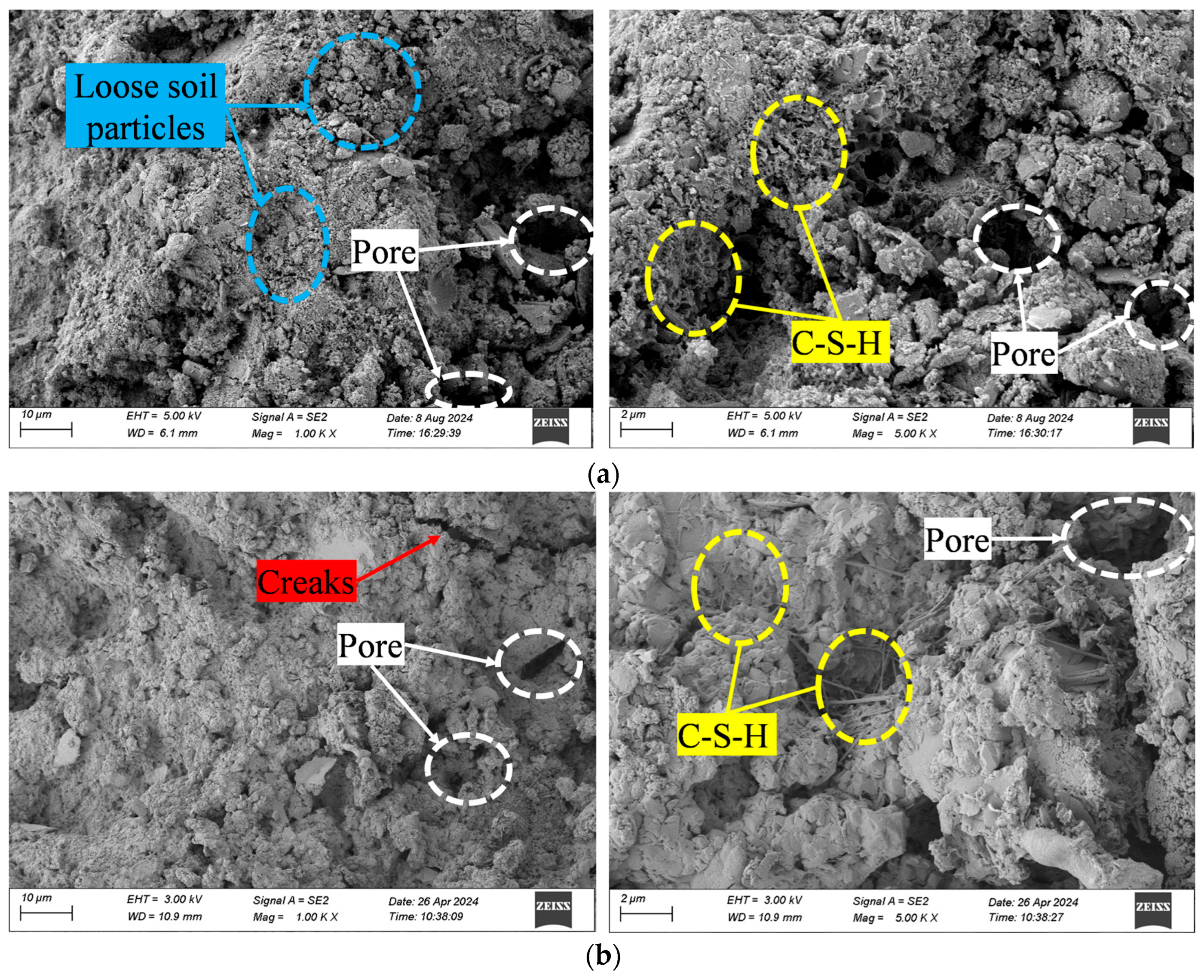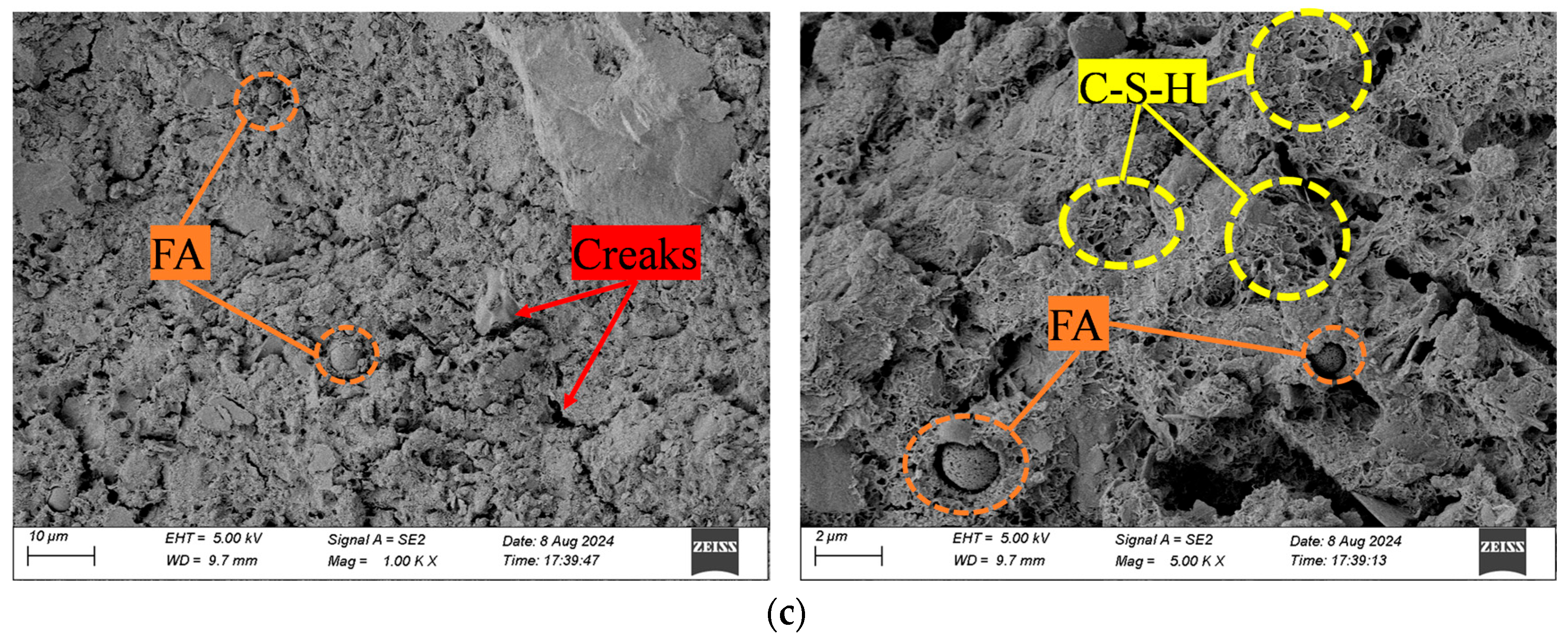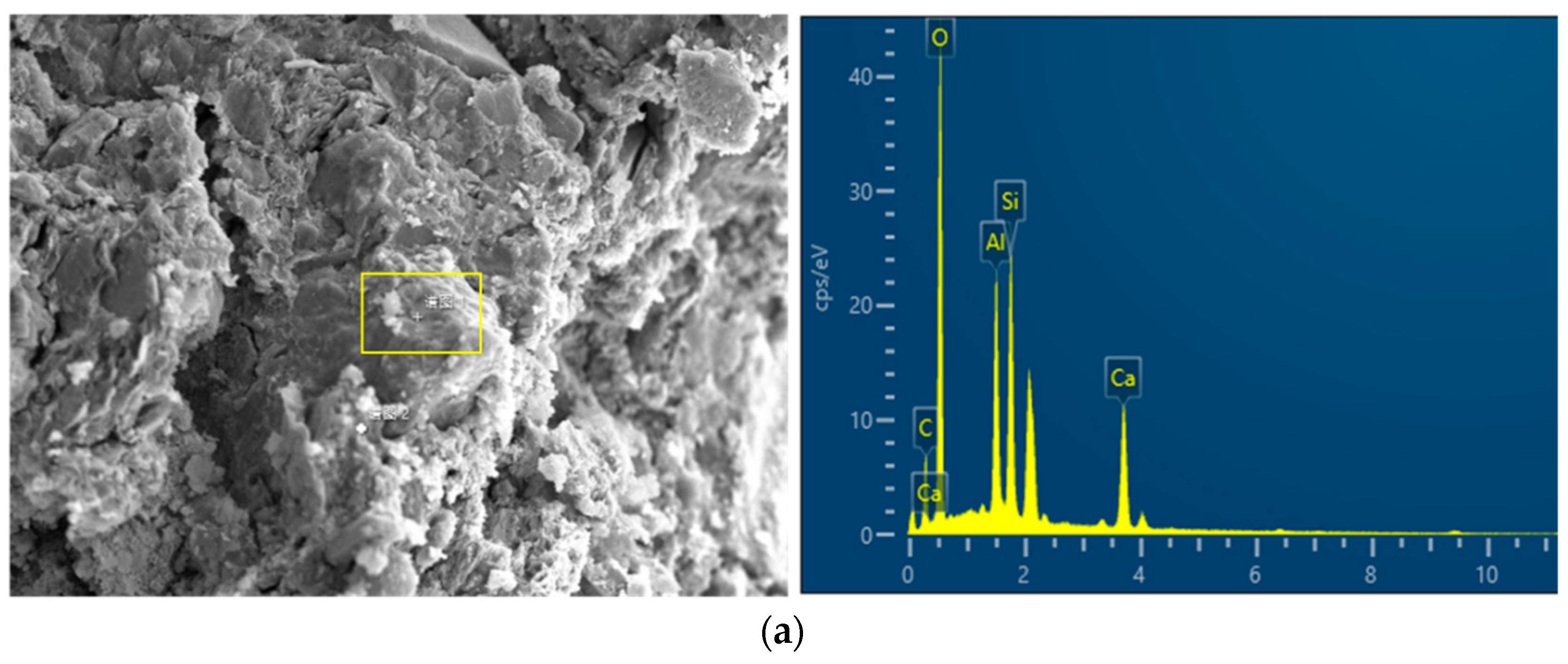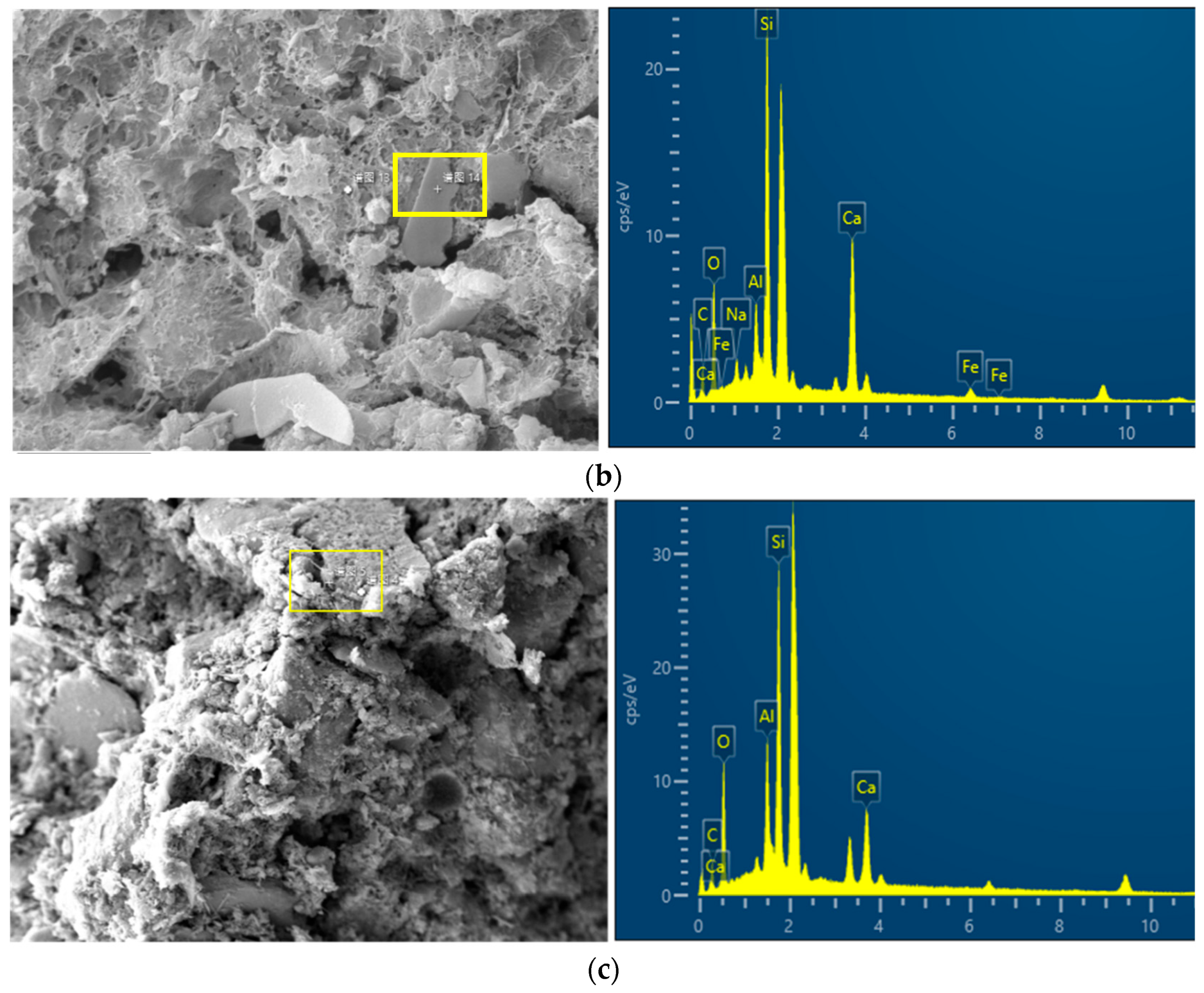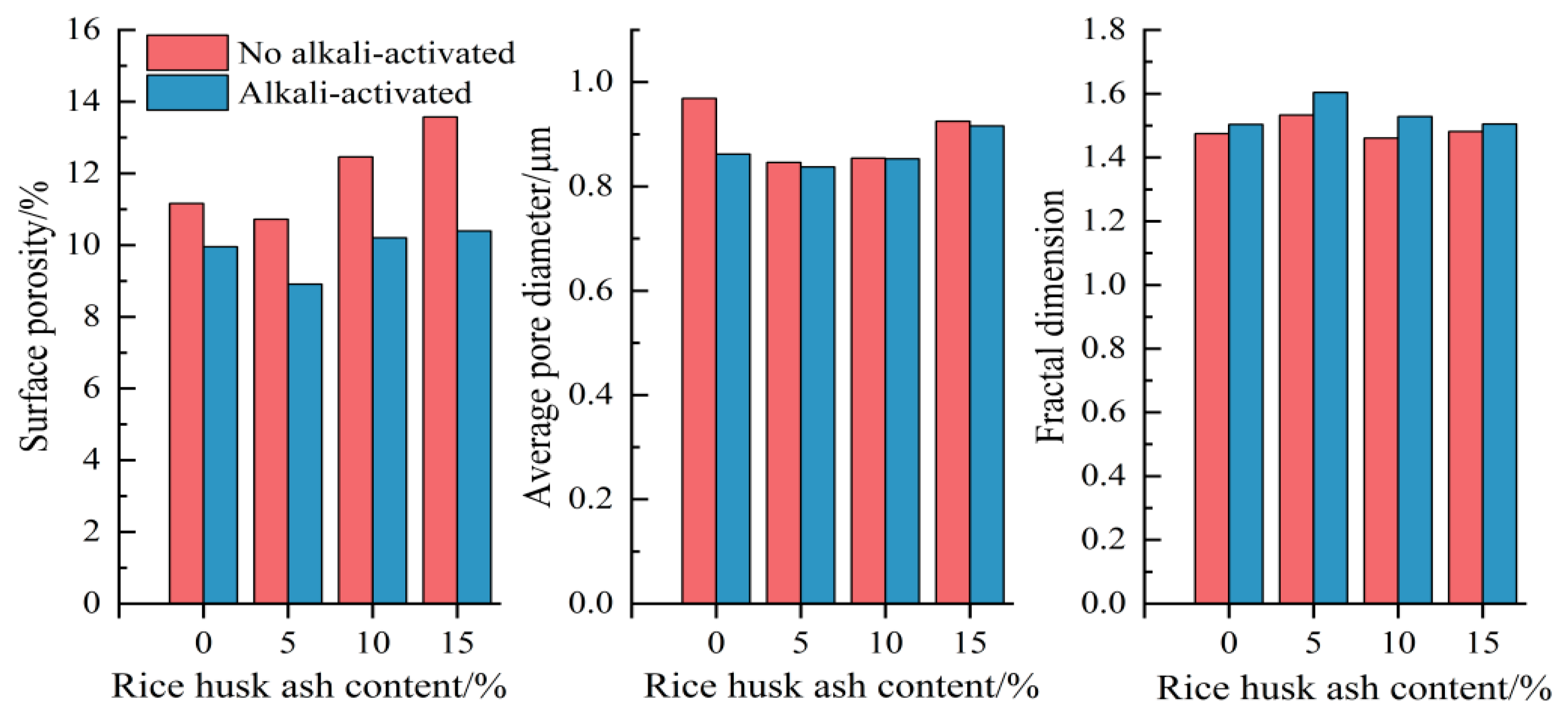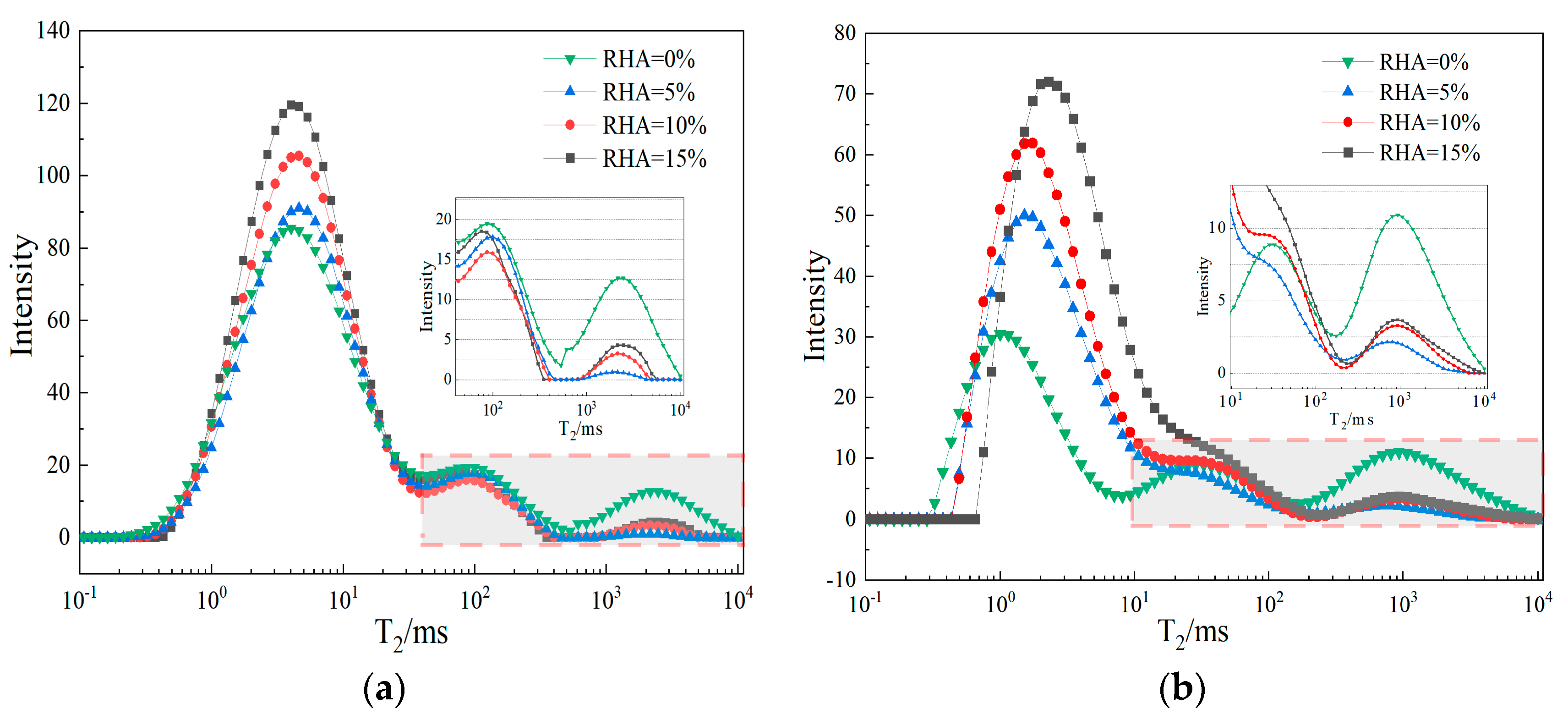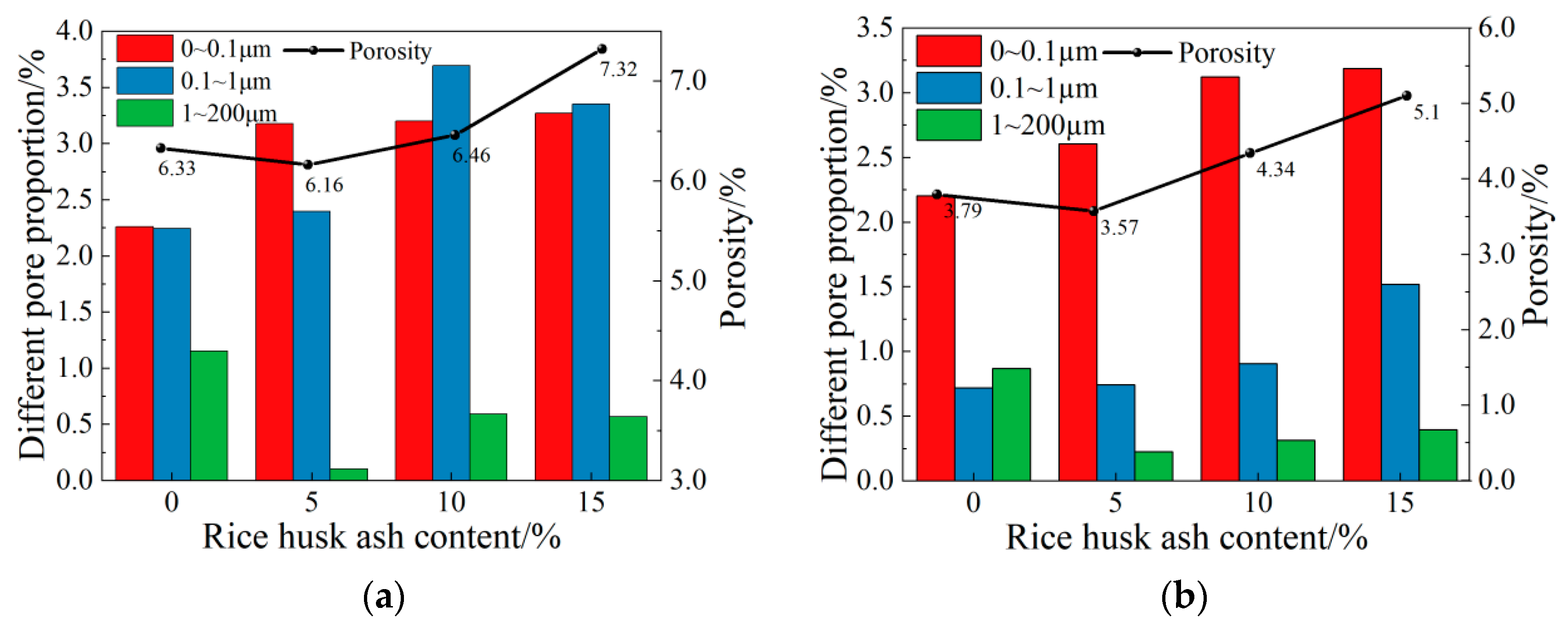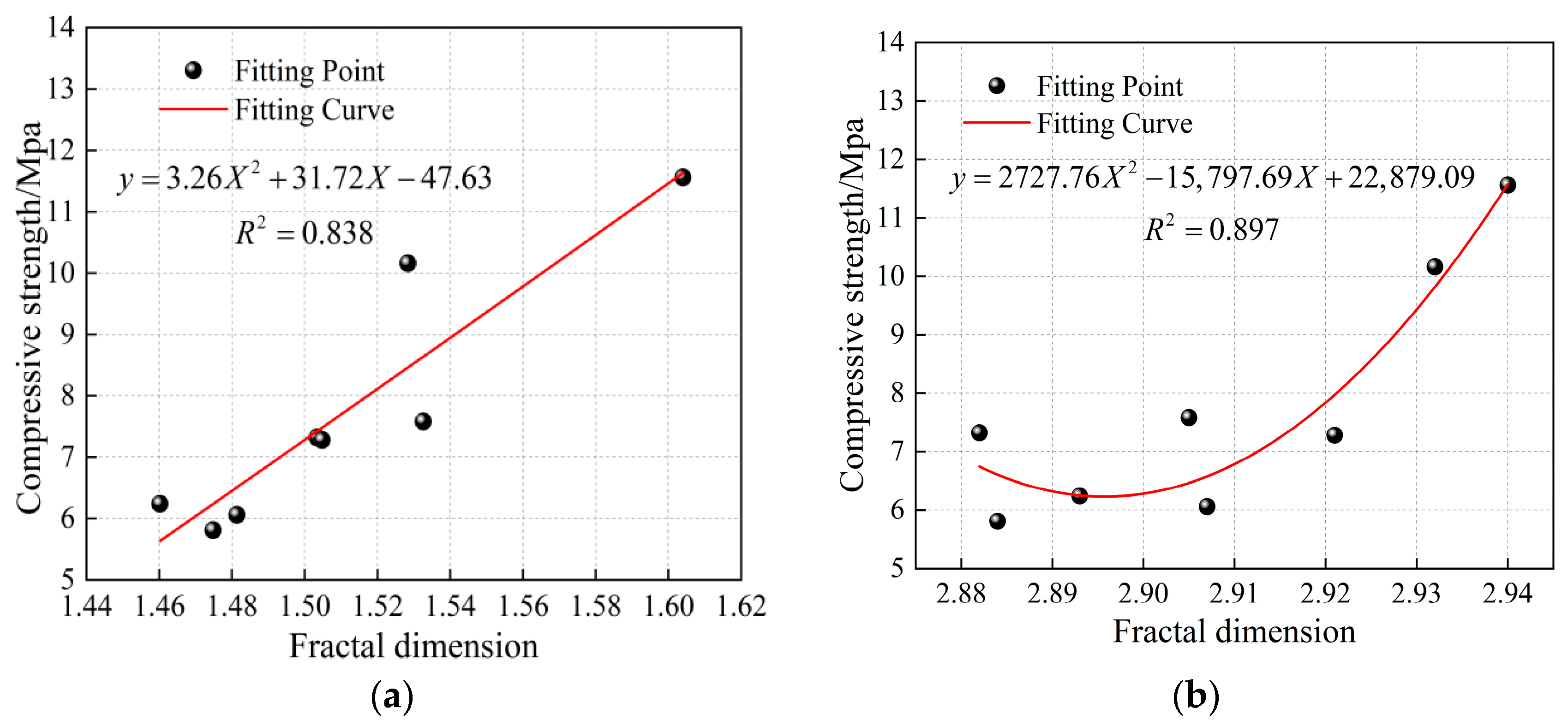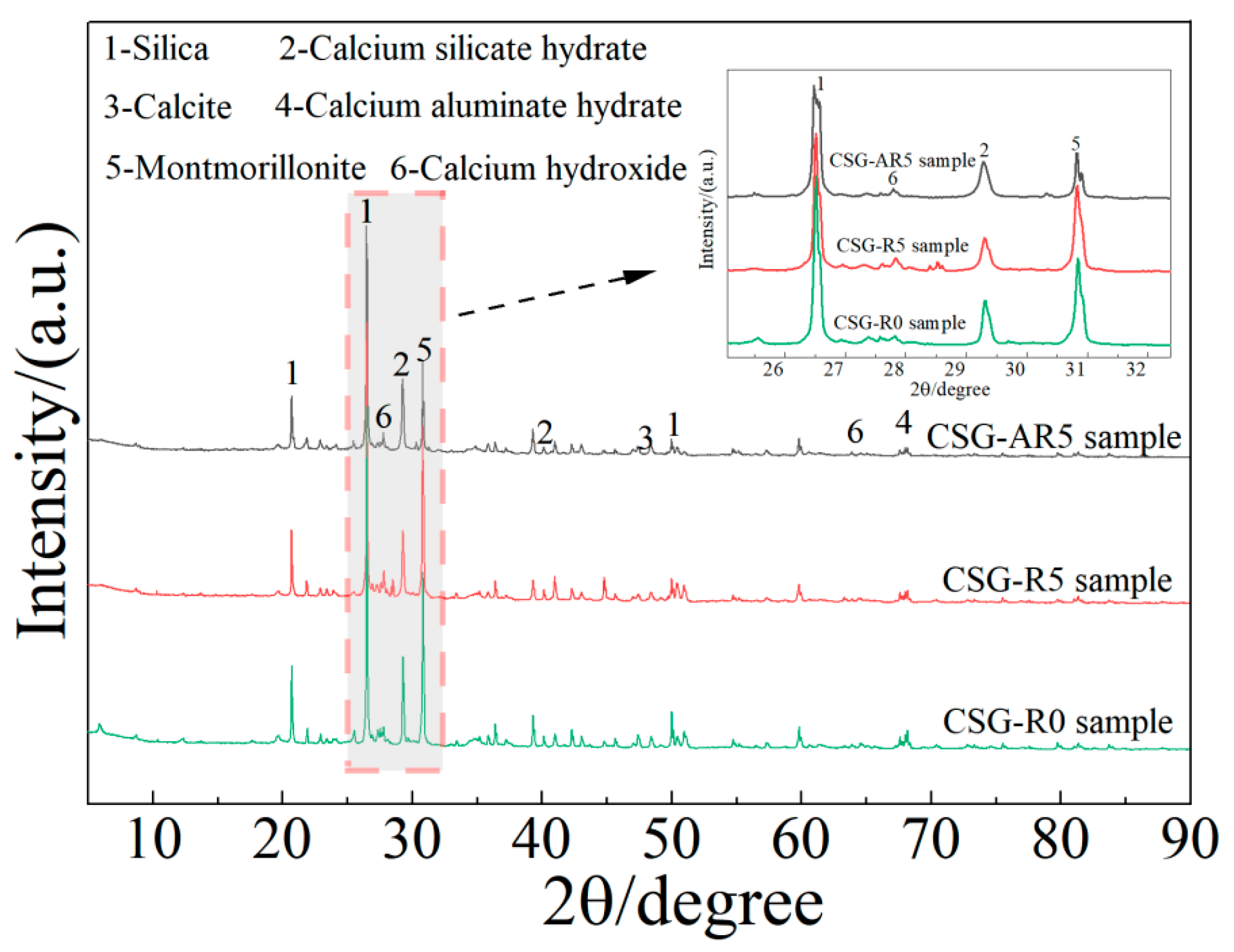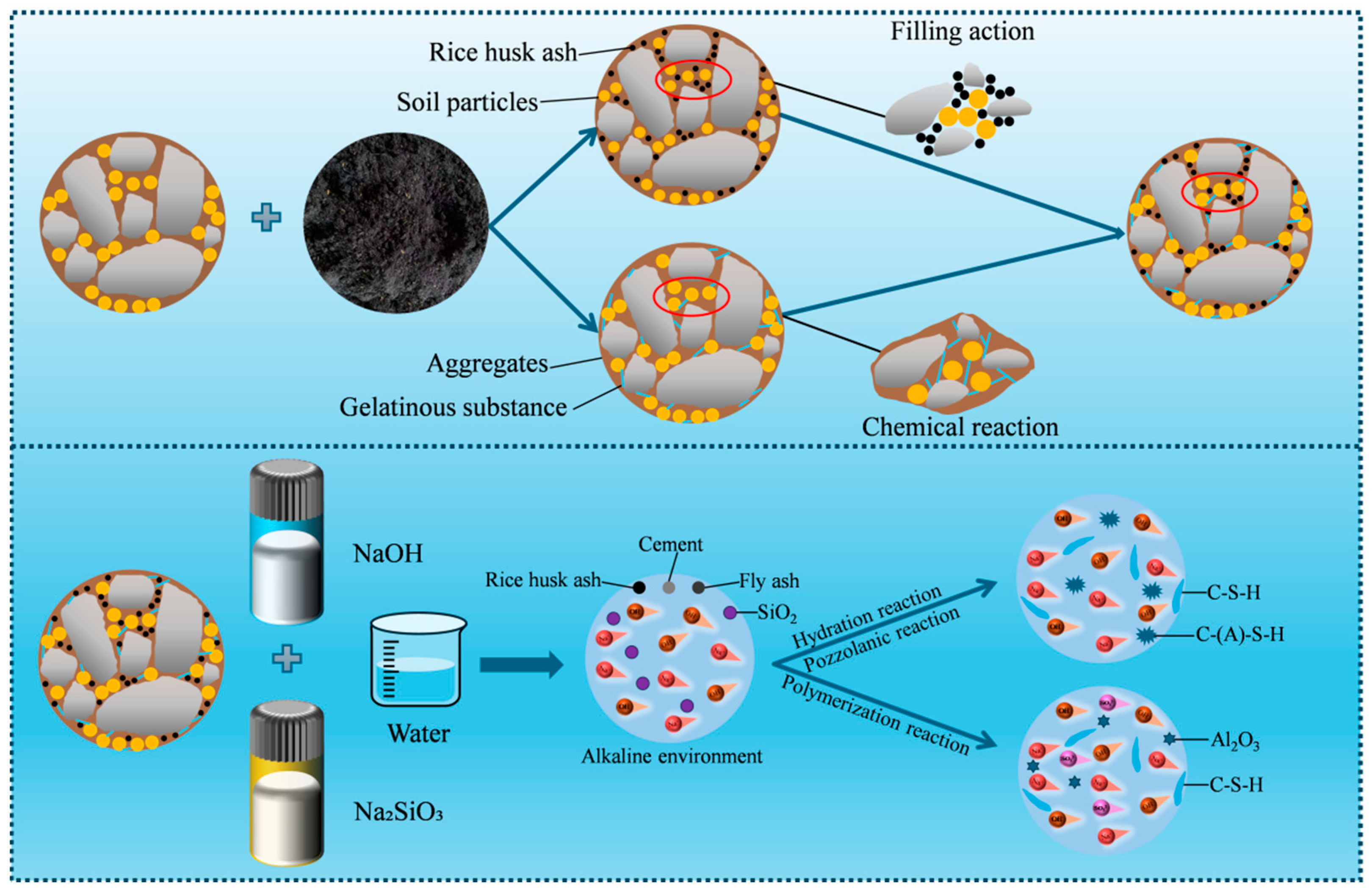1. Introduction
Cemented sand and gravel (CSG) materials are a new type of dam construction materials designed according to the concept of suitable materials and structures. Its main raw materials include riverbed materials [
1], excavation materials, artificial sand and gravel, water, and a small amount of cementitious materials, which are usually mixed using conventional technology and equipment. CSG materials have the advantages of less cement consumption, high construction efficiency, and strong material properties, and they have been widely used in water conservancy engineering [
2,
3].
CSG materials are usually composed of water, coarse and fine aggregates, cement, and fly ash mixed in a certain proportion, and its mechanical properties are closely related to water consumption, aggregate gradation, sand ratio, and cementitious material content [
4,
5]. Reasonable mix proportions and the handling of raw materials are key factors affecting materials’ mechanical properties. However, the cemented sand and gravel excavated directly from the riverbed often have a high mud content, and the mud attached to the raw materials can negatively impact the material properties, which usually does not meet the engineering application standards [
6]. Gong et al. [
7] found that the mechanical properties of cemented sand and gravel were negatively correlated with mud content, and that the compressive strength and flexural strength of CSG materials are significantly reduced with the increase in mud content. Excessive mud content suppresses the hydration reaction, and reduces the generation of cementitious substances, which in turn affects the bonding strength of CSG materials. The above-mentioned research results indicate that excessive mud content weakens the overall bonding effect of CSG materials, reducing density and strength. At present, it is stipulated in the material criteria for technical guideline for cemented granular material dams, that the mud content in CSG materials should not exceed 5% [
8], otherwise, it will adversely affect the strength and stability of the materials. In order to comply with the technical guidelines for cemented granular material dams, during the construction process, local sand and gravel aggregates need to be screened and washed to reduce the mud content, but the screening and washing process is not only time-consuming and labor-intensive, but also increases construction costs, failing to fully leverage the advantages of CSG materials. Although existing studies have identified the detrimental effects of high mud content on the performance of CSG materials, systematic research on preserving the strength of CSG materials while effectively solidifying the mud remains insufficient.
Some researchers have found that RHA, as a geopolymer material with high activity and large specific surface area [
9,
10,
11], is rich in large amounts of amorphous silica. The addition of RHA can effectively solidify mud-containing materials, thereby improving the microstructure of the materials and enhancing their mechanical properties [
12,
13,
14], which has been widely used in practical engineering. Li et al. [
15] studied the solidified lime soil of RHA and found that when the content of RHA was 4%, a large amount of hydrated silicate hydrates were generated on the soil surface, resulting in the densest microstructure and optimal mechanical properties. Li et al. [
16] studied the RHA-cement-solidified sludge and found that the compressive strength initially increases and then decreases with the increase in RHA content. The addition of RHA generates a large amount of C-S-H gel that connects the aggregate particles and enhances the bonding effect of the material. Chen et al. [
17] studied the performance of cured soft clay of RHA and found that the porous particle structure of RHA can effectively fill the pores and improve the compactness of the material. Meanwhile, the incorporation of RHA causes pozzolanic and hydration reactions, generating cementitious materials that fill and improve the pore structure, leading to improvements in the compressive and shear strength as well as durability of the RHA-solidified soft clay. However, RHA is classified as a low-calcium geopolymer rich in silica, which results in RHA-solidified materials exhibiting low early strength and high late strength characteristics [
18]. In order to enhance the solidification effect of RHA, domestically and internationally, researchers have found that using alkali activators mixed with RHA can increase its activity and promote the generation of cementitious materials, thereby significantly improving the solidification performance of RHA [
19,
20]. Zhao et al. [
21] studied alkali-activated RHA and blast furnace slag cementitious materials and found that alkali activators can enhance the pozzolanic activity of the cementitious materials and generate C-A-S-H cementitious substances that increases compressive strength. The optimal mechanical performance is achieved at a 10% RHA content. Li et al. [
22] studied alkali-activated RHA fiber-reinforced soil and found that the cementitious materials generated upon the addition of RHA enhanced the plasticity of the soil. Under the action of alkali activator, although no new phases formed within the samples, more cementitious substances were produced, further improving the microstructure. The above research results show that RHA exhibits superior performance as a solidifying material, and alkali activators can effectively enhance the solidification effect of RHA [
23].
The CSG materials have low content of cementitious materials, uneven distribution of aggregate gradation, resulting in more complex internal pore structures [
24]. Using scanning electron microscope (SEM), energy dispersive spectroscopy (EDS), nuclear magnetic resonance (NMR), and other techniques, it is difficult to quantitatively reveal the internal microstructure and mechanical mechanism of materials. In recent years, researchers both domestically and internationally have found that the fractal dimension, as an important representation parameter of fractal theory, can quantitatively describe changes in pore structure characteristics by quantifying the complexity of an object into fractal dimensions [
25,
26]. Zhao et al. [
27] studied gravel materials of different grades and found that there is a linear relationship between the fractal dimension and the strength and damage index. Zhang et al. [
28] studied roller compacted concrete with different large, crushed stone content and established a mathematical model for determining the mechanical properties and damage degree based on fractal dimensions, revealing the influence of large, crushed stone content on mechanical properties and frost resistance of roller compacted concrete (RCC) from a microscopic perspective. The above research results indicate that studying the effects of changes in material microstructure on mechanical properties through variations in fractal dimension is feasible.
To address the issue of reduced strength caused by high mud content in CSG materials, this study conducted unconfined compressive tests to deeply investigate the macroscopic mechanical properties of CSG materials with different ratios of alkali activators and RHA. Microscopic techniques such as SEM, EDS, NMR, and X-ray Diffraction (XRD) were employed to analyze the changes in the microstructure of the materials and combined with fractal theory to quantitatively characterize the internal microstructure [
29,
30], revealing the mechanism by which alkali-activated RHA enhances the mechanical properties of CSG materials from a microscopic perspective, and providing a theoretical basis for addressing the negative impact of high mud content on the mechanical properties of CSG materials.
5. Conclusions
Through examining the mechanical properties and microstructure of CSG materials with high mud content, combined with pore characteristic parameters and pore volume fractal dimensions, this study reveals the enhancement mechanism of action by which alkali-activated RHA enhances the mechanical properties of CSG materials from a microscopic perspective. The main conclusions are as follows:
RHA significantly enhances the macroscopic mechanical properties of CSG materials. As the content of RHA increases, the compressive strength and elastic modulus first increase and then decrease, while the failure strain first decreases and then increases. The failure mode transitions from splitting failure without RHA to shear failure. The addition of alkali activators enhances the pozzolanic activity of RHA and fly ash, further improving the overall strength of the CSG specimens. The mechanical properties are optimal at a 5% RHA content.
RHA improves the internal microstructure of the materials. The addition of an appropriate amount of RHA not only fills some of the small pores, but also generates needle-like and reticular cementitious substances under alkali activation, which help to solidify the loose fine-grained soil. However, excessive incorporation of RHA can inhibit part of the hydration reactions, resulting in a relative weakening of the bonding effect between particles. When the RHA content is 5%, the generated cementitious substances are maximal, the effects of filling pores and solidifying fine-grained soil are most pronounced, and the microstructure is the densest.
The results based on NMR fractal dimension show that, with the addition of RHA, the fractal dimensions of the capillary pores and macropores show a trend of first increasing and then decreasing. Under the influence of the alkali activator, the capillary pores exhibit an overall increasing trend, while the fractal dimension of the macropores fluctuates slightly. Compared to the SEM fractal dimension, the NMR fractal dimension has a better fit effect with compressive strength. The XRD results indicate that the addition of RHA and the alkali activator causes changes in the mineral composition, but no new phases are generated within the materials.
